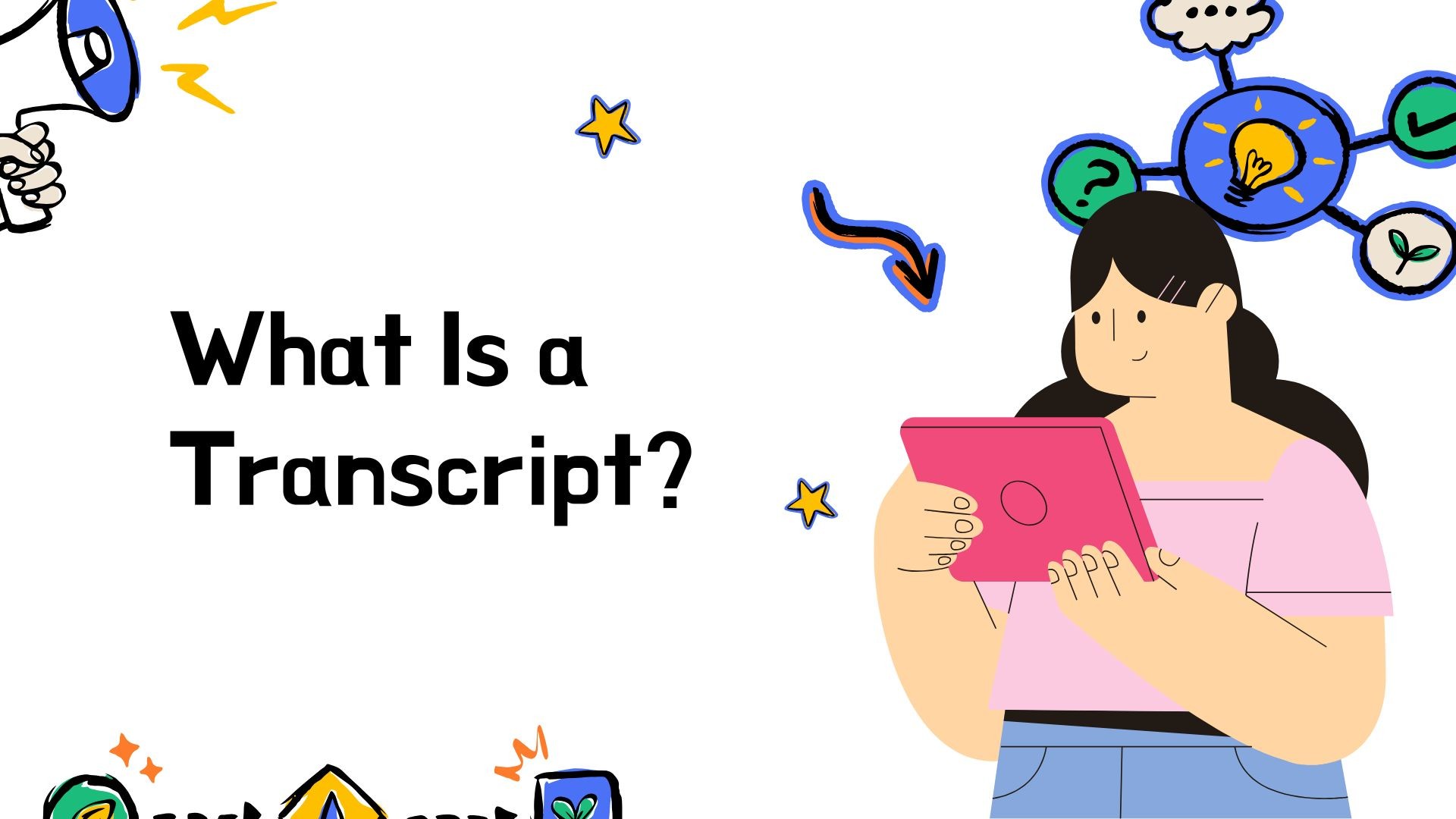The term “transcript” is used in multiple disciplines, each with a distinct meaning and purpose. Whether in education, law, linguistics, or biology, transcripts play an essential role in documentation, research, and communication.
This article explores what a transcript is, how it is used in various domains, and why it is important.
1. What Is a Transcript?
A transcript is a written or printed record of spoken, recorded, or genetic information. It serves as a faithful representation of original material, making it easier to store, analyze, and share information.
✔ In education → A transcript is an official academic record of a student’s performance.
✔ In law → A transcript is a verbatim record of court proceedings.
✔ In linguistics → A transcript converts spoken language into written form for analysis.
✔ In biology → A transcript refers to messenger RNA (mRNA), created from DNA for protein synthesis.
💡 Though the term “transcript” has different meanings, its core function remains the same: to preserve and communicate essential information in a structured form.
2. The Role of Transcripts in Digital Media
While transcripts serve different purposes across education, law, linguistics, and biology, they are also essential in the digital media landscape. In the modern era of videos, podcasts, and online communication, transcripts help convert spoken content into written text, making it easier to access, analyze, and repurpose information.
✔ Enhanced Accessibility – Transcripts provide text-based alternatives for individuals with hearing impairments or those who prefer reading over listening.
✔ Improved Information Retention – Reading along with a transcript reinforces comprehension and allows for easy reference.
✔ Content Repurposing – Video and audio transcripts can be converted into blog posts, research papers, or subtitles, expanding content reach.
✔ SEO Optimization – Search engines cannot crawl video/audio content, but adding transcripts improves search rankings.
VOMO AI: A Smarter Way to Generate Transcripts
As media consumption shifts toward video and audio formats, tools like VOMO AI simplify the process of transcribing and summarizing spoken content.
✔ Automatically transcribes audio and video files into text with high accuracy.
✔ Supports over 50 languages, making it ideal for global users.
✔ Converts YouTube videos, voice memos, and meeting recordings into structured text.
✔ AI-powered summaries extract key points, saving time for researchers and professionals.
💡 Whether you’re a content creator, researcher, or business professional, VOMO AI helps transform speech into structured text effortlessly.
Want to discover the best AI transcription tools for capturing and transcribing real-life conversations effortlessly? 👉 Click here to explore top solutions!
3. Educational Transcripts: Recording Academic Performance
What Is an Educational Transcript?
An educational transcript is an official document issued by schools, colleges, or universities that records a student’s academic performance. It serves as proof of education for further studies, job applications, and professional licensing.
Key Components of an Academic Transcript
📌 Course List – All subjects or modules studied.
📌 Grades & Scores – Marks or grades earned in each course.
📌 Degree & Certification Details – Degrees or diplomas awarded.
📌 Institution Details – School or university name, issuing authority, and official seal.
Why Are Academic Transcripts Important?
✔ Required for college/university admissions – Universities review transcripts to assess student qualifications.
✔ Essential for job applications – Employers may request transcripts as proof of education.
✔ Used for credit transfers – When switching institutions, previous transcripts may be needed.
🔹 Other Names for Educational Transcripts: Report cards, mark sheets, academic records.
💡 Students should keep copies of their transcripts to ensure smooth applications for higher education and career opportunities.
4. Legal Transcripts: Maintaining Court Records
What Is a Legal Transcript?
A legal transcript is a verbatim record of spoken words in courtrooms, legal hearings, and depositions. It captures every word spoken by judges, attorneys, witnesses, and defendants to provide an official account of legal proceedings.
Purpose of Legal Transcripts
✔ Official record-keeping – Ensures courts and legal professionals have a detailed record.
✔ Appeals & case reviews – Used as evidence in higher courts when appealing decisions.
✔ Reference for legal professionals – Lawyers and judges use transcripts to analyze arguments and rulings.
Who Creates Legal Transcripts?
Court stenographers or legal transcriptionists use specialized tools like stenotype machines and AI transcription software to accurately capture proceedings.
💡 Legal transcripts are crucial for justice, preserving every statement made in court.
5. Linguistic Transcripts: Converting Speech to Text
What Is a Linguistic Transcript?
In linguistics, a transcript is the written representation of spoken language, used for speech analysis, phonetics, and dialect studies.
Types of Linguistic Transcription
🗣 Phonetic Transcription – Uses special symbols (like IPA) to precisely capture speech sounds.
📝 Orthographic Transcription – Uses standard spelling to represent spoken words.
Applications of Linguistic Transcription
✔ Language research – Studying accents, pronunciation, and dialects.
✔ Speech recognition training – AI tools like Siri and Google Assistant rely on transcriptions.
✔ Closed captions & subtitles – Converting audio into text for films, TV, and online videos.
💡 Linguistic transcripts are essential for understanding spoken language, improving AI assistants, and making video content accessible.
6. Biological Transcripts: The Basis of Genetic Expression
What Is a Biological Transcript?
In molecular biology, a transcript refers to messenger RNA (mRNA), which is created when genetic information from DNA is copied to RNA. This process, called transcription, is essential for protein synthesis and gene expression.
Steps in Genetic Transcription
1️⃣ Initiation – The enzyme RNA polymerase binds to DNA and unwinds it.
2️⃣ Elongation – RNA polymerase reads the DNA sequence and creates a complementary RNA strand.
3️⃣ Termination – The mRNA strand is completed and detaches from the DNA template.
Why Is Genetic Transcription Important?
✔ Essential for protein production – Without mRNA transcripts, cells cannot produce proteins.
✔ Key to understanding genetic diseases – Malfunctions in transcription can lead to genetic disorders.
✔ Vital for medical advancements – Studying mRNA helps develop vaccines and gene therapies.
💡 Understanding transcription at the molecular level helps scientists develop treatments for genetic disorders and improve biotechnology.


